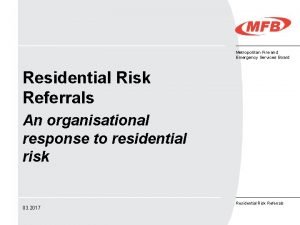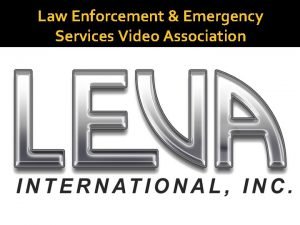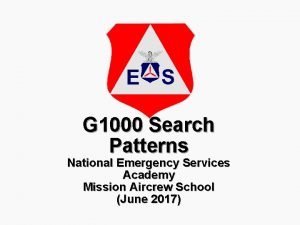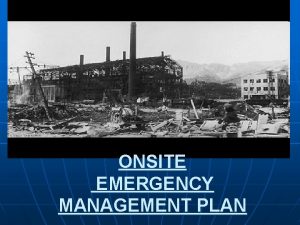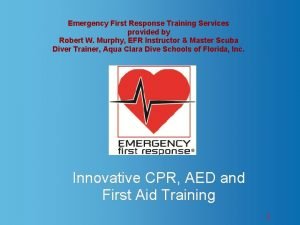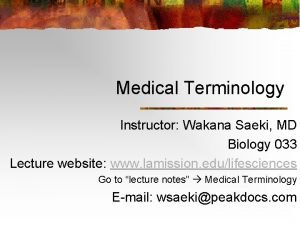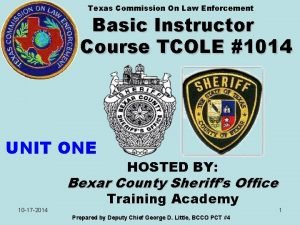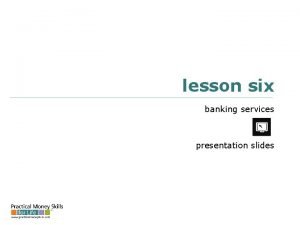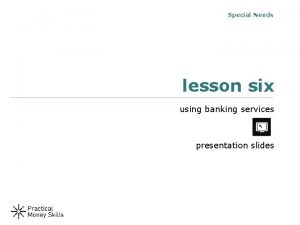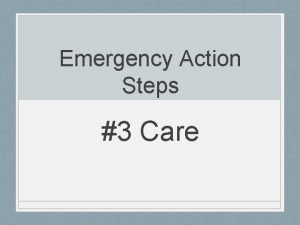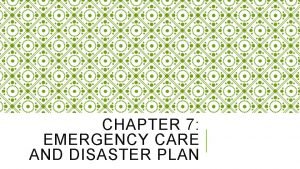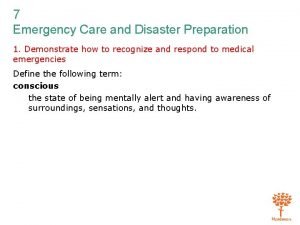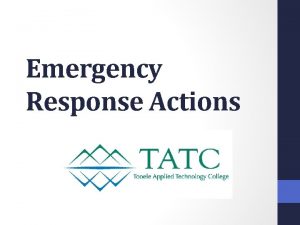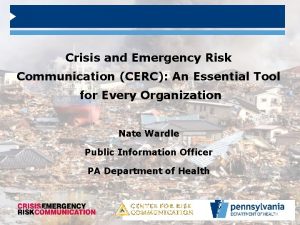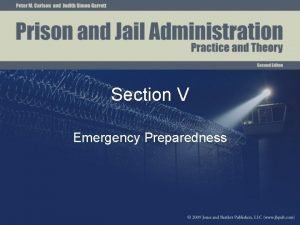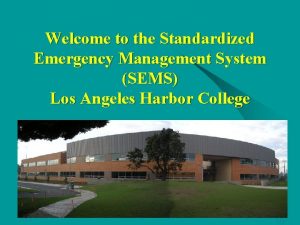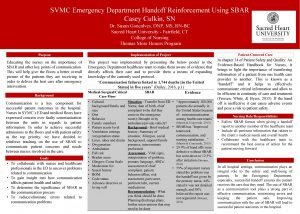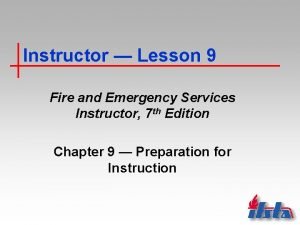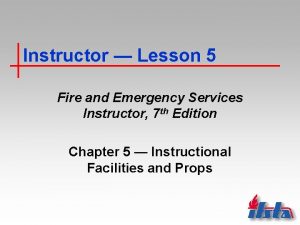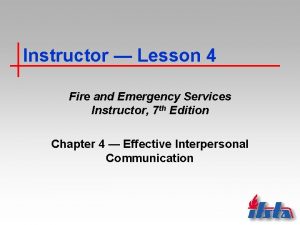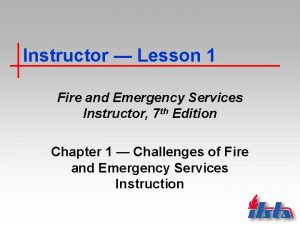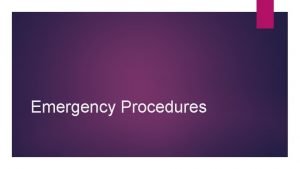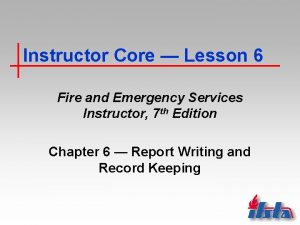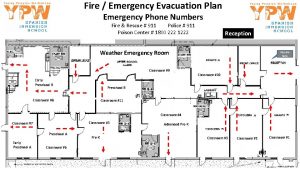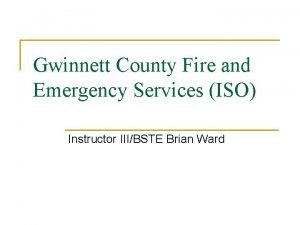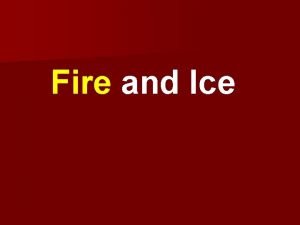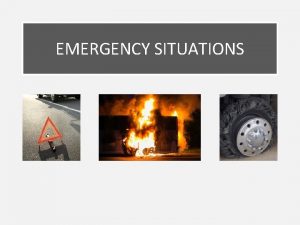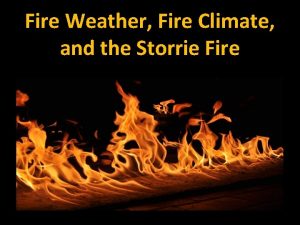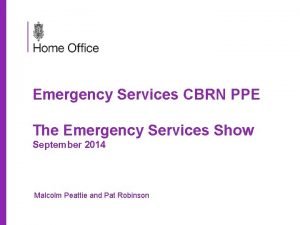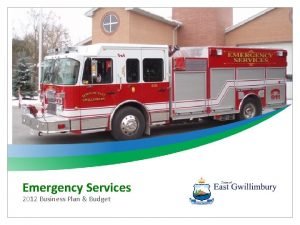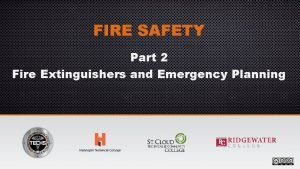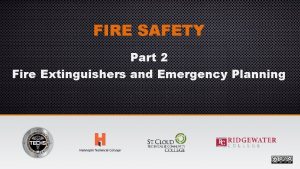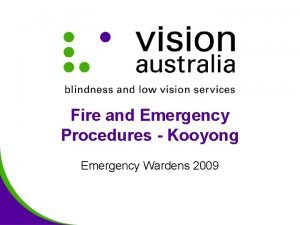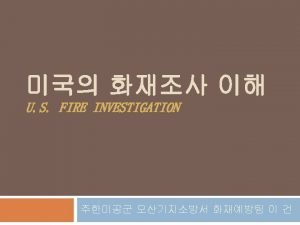Instructor Lesson 12 Fire and Emergency Services Instructor

























































































- Slides: 89

Instructor — Lesson 12 Fire and Emergency Services Instructor, 7 th Edition Chapter 12 — Structured Exercises, Demonstrations, and Practical Training Evolutions

Learning Objectives 1. Identify facts about structured exercises. 2. Explain the steps in a psychomotor skills demonstration. 3. Describe benefits of practical training evolutions. (Continued) Instructor 12– 1

Learning Objectives 4. List factors that the instructor must consider when preparing practical training evolutions. 5. List types of tasks or situations applicable to practical training evolutions. (Continued) Instructor 12– 2

Learning Objectives 6. Discuss locations used for practical training evolutions. 7. Identify accurate statements about factors to consider in planning practical training evolutions. 8. Identify guidelines for planning a practical training evolution. (Continued) Instructor 12– 3

Learning Objectives 9. List guidelines for ensuring the safety of students who participate in a practical training evolution. 10. Describe methods used to control an evolution. 11. Identify accurate statements about simple training evolutions. (Continued) Instructor 12– 4

Learning Objectives 12. Discuss complex training evolutions. 13. Explain the importance of live-fire training evolutions. 14. Identify accurate statements about small-fire training evolutions. 15. List guidelines for interior structural fire training. (Continued) Instructor 12– 5

Learning Objectives 16. Identify facts about exterior firesuppression training. 17. Identify facts about technical training evolutions. (Continued) Instructor 12– 6

Learning Objectives 18. Identify accurate statements about instructor preparation when planning practical training evolutions. 19. Deliver a prepared classroom lesson. (Skill Sheet) Instructor 12– 7

Structured Exercises • • • Case study Role-play Brainstorming sessions Simulation Field and laboratory experience Instructor 12– 8

Case Study • Description of a real or hypothetical problem • Similar to problems on the job • Detailed accounts of past events – Analyze the situation – Evaluate the situation – Synthesize possible answers (Continued) Instructor 12– 9

Case Study • Analyze situations and examine facts • Must have past experiences and education • Use a development process • Examples can come from many areas Instructor 12– 10

Role-play • Students portray characters and act the • • roles assigned to them in scenarios Opportunity to practice actions Used for a variety of tasks/situations Helpful for affective domain Plan and monitor role-play scenarios (Continued) Instructor 12– 11

Role-play • Debrief at the end of roleplay • Has both advantages and disadvantages Courtesy of Alabama Fire College. Instructor 12– 12

Brainstorming Sessions • A group of students is given a problem or situation and time to determine a solution Courtesy of Iowa Fire Service Training Bureau. (Continued) Instructor 12– 13

Brainstorming Sessions • Students must have adequate knowledge • Can be used for management and administrative personnel (Continued) Instructor 12– 14

Brainstorming Sessions • Rules of brainstorming – Record all ideas – Allow everyone to speak – Encourage creative ideas – Respect each member – Encourage piggybacking – Evaluate and prioritize issues – Act as a facilitator Instructor 12– 15

Simulation • Allows students to participate in a scenario that represents real-life situations • Includes practical training and computer -based training • Experience situations without negative results (Continued) Instructor 12– 16

Simulation • May include elements of role-play • Must effectively reflect what students will encounter on duty Instructor 12– 17

Field and Laboratory Experience • Involve elements of demonstration and simulation • Field — Observe a systems test or see steps for a procedure • Laboratory — Can see models of equipment or perform experiments Instructor 12– 18

Psychomotor Skills Demonstration • Begins with: – An explanation of the skill – Why it is important – How it relates to other skills – How many people are required to perform it – When it should be performed (Continued) Instructor 12– 19

Psychomotor Skills Demonstration • Demonstration of skill at normal speed • Skill is performed slowly with explanation • Students practice steps • Students work in small groups • Evaluation of the skill Instructor 12– 20

Benefits of Practical Training Evolutions • Fulfill written requirements for hands-on training • Permit students to apply knowledge and practice skills – Entry-level firefighter – Experienced firefighter (Continued) Instructor 12– 21

Benefits of Practical Training Evolutions • Promote enthusiasm, morale, and team spirit • Training for potential joint operations Instructor 12– 22

Preparing Practical Training Evolutions • Location • Evolution planning and control requirements • Safety and health • Instructor preparation Instructor 12– 23

Practical Training Evolution Tasks and Situations • Fire suppression – Interior – Exterior – Flammable liquids (Continued) Instructor 12– 24

Practical Training Evolution Tasks and Situations • Technical training – Vehicle and apparatus operations – Hazardous materials – Technical rescue – Emergency medical training – Counterterrorism operations – Disaster management Instructor 12– 25

Locations for Practical Training • Permanent or remote sites • Develop a list of potential facilities • Remote sites may include a wide variety of locations (Continued) Instructor 12– 26

Locations for Practical Training • WARNING: Instructors must be familiar with and adhere to: – NFPA® 1403 – OSHA, federal, state/provincial, and local laws and ordinances that pertain to environmental protection – Jurisdictional policies and procedures Instructor 12– 27

Planning Practical Evolutions • Safety – Balance realism with level of risk – Use PPE and plan for safety • Learning objective/outcome — Must be obtained • Justification (Continued) Instructor 12– 28

Planning Practical Evolutions • Supervision – Larger evolutions require more instructors – Rule of thumb is an instructor-to-student ratio of 1 to 5 • Resources/logistics — Plan must provide for all needed resources such as water and equipment (Continued) Instructor 12– 29

Planning Practical Evolutions • • • Weather Legal requirements Incident command system (ICS) Coordination Exposures Evaluation/critique Instructor 12– 30

Guidelines for Planning a Practical Evolution • Each participant should have input • Do not assign too many participants to specific tasks; keep all participants busy and reduce stand-around time • Provide a safe staging area • Maintain suitable instructor-to-student ratio (Continued) Instructor 12– 31

Guidelines for Planning a Practical Evolution • Assign a safety officer • Assign a fuel-control officer • Ensure students have needed skills and knowledge Courtesy of Alabama Fire College. (Continued) Instructor 12– 32

Guidelines for Planning a Practical Evolution • Design so that positive outcome is possible • Provide a summary • Record the training evolution Instructor 12– 33

Guidelines for Ensuring the Safety of Participants • Determine that each participant is: – In good health and physical condition – Emotionally able to perform tasks • Monitor participants • Do not allow length to interfere with learning Instructor 12– 34

Methods Used to Control Evolutions • • Supervising Monitoring Teaching Managing Instructor 12– 35

Simple Training Evolutions • Involve small numbers of students performing a single task that requires only a few skills Example: Using a portable fire extinguisher • May involve from one to five participants and require only one or two instructors (Continued) Instructor 12– 36

Simple Training Evolutions • Repeated until participants can perform without error Courtesy of Iowa Fire Service Training Bureau. (Continued) Instructor 12– 37

Simple Training Evolutions • Begin by explaining learning objective, demonstrating, relating to lecture, and emphasizing safety • Immediately stop and correct errors (Continued) Instructor 12– 38

Simple Training Evolutions • Perform as though real incident – Wear appropriate PPE – Follow policies and procedures such as NIMS ICS – Practice with minimum and maximum staffing levels Instructor 12– 39

Complex Training Evolutions • NIMS ICS must be used for practical training evolutions that involve multiple teams – Based on NFPA® 1561, Standard on Emergency Services Incident Management System – U. S. government has adopted ICS as part of NIMS (Continued) Instructor 12– 40

Complex Training Evolutions • Benefits of NIMS ICS – Safety and accountability of participants – Acquaints participants with operation of the system • Interior fire fighting training must include a rapid intervention team or crew (Continued) Instructor 12– 41

Complex Training Evolutions • Multiple agencies or jurisdictions – Controlling evolution is critical – NIMS ICS helps in coordination – Clear-text (plain English) is essential – Establish training outcome Instructor 12– 42

Live-Fire Training Evolutions • Can involve small fires, interior structural fires, and exterior fires • Must meet NFPA® 1403 • Important part of entry-level and experienced firefighter training – Learn new skills – Improve skills (Continued) Instructor 12– 43

Live-Fire Training Evolutions • Number of fires has decreased in many communities – Fewer opportunities for experience – Decrease in actual firefighting incidents – Assignment to EMS duties – Practical training evolutions involving livefire provide experience Instructor 12– 44

Small Fire Training Evolutions • Majority of fires involve small quantities of fuel • Use of portable fire extinguishers • Usually take place outside Courtesy of Central Florida Fire Academy. (Continued) Instructor 12– 45

Small Fire Training Evolutions • Fuel may include: – Class A materials in the form of shipping pallets – Class B materials in small burn pans (Continued) Instructor 12– 46

Small Fire Training Evolutions • Instructors demonstrate then students repeat procedures • Backup extinguishing system must be present Instructor 12– 47

Guidelines for Interior Structural Fire Training • Purpose-built structures should be equipped with temperature sensors • Must meet requirements of NFPA® 1403 • Students must have requisite Firefighter I training and wear full PPE • NIMS ICS requirements followed (Continued) Instructor 12– 48

Guidelines for Interior Structural Fire Training • RIT/RIC unit organized and staffed • Students or instructors may not act as victims within the burn structure (Continued) Instructor 12– 49

Guidelines for Interior Structural Fire Training • Only one designated ignition officer may start the fire • Ignition must start at the most remote point in the structure and work toward the exit Instructor 12– 50

Exterior Fire-Suppression Training • May include evolutions that simulate: – Transportation fires – Flammable/combustible liquids fires – Wildland fires – Large quantities of Class A materials fires (Continued) Instructor 12– 51

Exterior Fire-Suppression Training • Permanent training facility or remote site • Single or multiple company training Instructor 12– 52

Transportation Fires • May occur in all types of air, sea, or land craft • Can be small or large • Burning material may be Classes A, B, or D; may have been ignited by Class C fuels (Continued) Instructor 12– 53

Transportation Fires • Training can occur with single or multiple company evolutions • Duplicated using permanent training props contained in burn pits and fueled by LPG, natural gas, or flammable/combustible liquids Instructor 12– 54

Flammable/Combustible Liquid Fires • Usually restricted to purpose-built props at permanent training facilities • Requirements include: – Piped fuel supplies and control valves – Product- and water-containment diking – High-capacity water supplies – Water-decontamination capabilities (Continued) Instructor 12– 55

Flammable/Combustible Liquid Fires • Generally involve Courtesy of Central Florida Fire Academy. multiple company training • Must conform to NFPA® 1403 and establish a NIMS ICS organization Instructor 12– 56

Wildland Fires • Two approaches – Specialized training – Training for structural firefighters • Training may be the same • Structural firefighters may receive only limited training Instructor 12– 57

Large-Quantity Class A Material Fires • Potential in all jurisdictions; in general, these fires: – Generate a great deal of heat – Create exposure hazards – Require large quantities of water and/or foam – Consume time and personal energy (Continued) Instructor 12– 58

Large-Quantity Class A Material Fires • Creating evolutions is difficult • Considerations include: – Effects of weather – Smoke and embers movement – Environmental requirements – Full PPE – ICS Instructor 12– 59

Technical Training Evolutions • Expanding role of fire and emergency services in protecting life and property • Technical training is required to learn new skills and keep current skills levels Instructor 12– 60

Emergency Vehicle Operations • Personnel who drive emergency vehicles must be trained and certified Courtesy of Central Florida Fire Academy. (Continued) Instructor 12– 61

Emergency Vehicle Operations • Training involves many aspects of driving and maintenance • Training may occur on a purpose-built driving course, on simulated courses, or public streets and thoroughfares Instructor 12– 62

Vehicle Extrication • Training involves the use of power and hand tools to remove a victim trapped in a wrecked vehicle • May occur at a variety of locations Instructor 12– 63

Emergency Medical or Triage Operations • Mass casualties are simulated, training is coordinated between rescuers, medical aid workers, and hospitals • Usually occurs as part of a major disaster drill Instructor 12– 64

Agricultural Equipment Rescue Operations • Derelict agricultural equipment is used to simulate victims pinned or with limbs caught • Mannequins are used for victims • Power and hand tools are used • Similar to vehicle extrication training Instructor 12– 65

Machinery and Industrial Extrication • Similar to vehicle extrication and agricultural equipment rescue operations training • May occur in factories or plants where old equipment is being dismantled Instructor 12– 66

Surface-Water, Swift-Water, and Dive Rescues • May involve the use of lifelines, boats, helicopters, or swimmers Courtesy of Alabama Fire College. (Continued) Instructor 12– 67

Surface-Water, Swift-Water, and Dive Rescues • May occur in swimming pools, ponds, lakes, streams, or rivers • Proper safety equipment, including personal flotation devices must be used Instructor 12– 68

Building Collapse Search and Rescue Operations • Large agencies may have purpose-built simulations • Vacant commercial structures or structures for demolition may be used (Continued) Instructor 12– 69

Building Collapse Search and Rescue Operations • Collapse conditions can be simulated • Small sections of concrete pipe or wall sections can be used for cutting and breaching Instructor 12– 70

Hazardous Materials Operations • Simulations can take place at: – Training facility – Industrial sites – Rail or marine facilities – Access-controlled roadways Instructor 12– 71

Aboveground/Below-Grade Operations • Basements in structures that have outside access can be used Instructor 12– 72

Trench Shoring and Rescue Operations • Temporary trenches can be dug and shored where space and codes permit • Consider soil conditions, permit requirements, weather, and access • Shoring can occur in an aboveground space lined with permanent concrete walls Instructor 12– 73

Ice Rescues • Must occur when the water is sufficiently frozen to support weight of students • Must use lifelines, thermal protection, and personal flotation devices (Continued) Instructor 12– 74

Ice Rescues • Sites include frozen bodies of water, ice -skating and hockey rinks • Difficult to simulate Instructor 12– 75

Power Tool and Equipment Operations • May initially be provided by manufacturer • Once instructors certified, they provide training to operational personnel Instructor 12– 76

Confined-Space Entry Operations • Simulated through the construction of mazes made of wood, canvas, or tables • Students wear full PPE and SCBA facepieces covered with blackout materials • Can also occur in vacant buildings Instructor 12– 77

Counterterrorism Operations • Can include various props and locations • Can be multijurisdictional and occur on many levels Instructor 12– 78

Disaster Management Operations • Similar to counterterrorism operations • Involve both strategic and operational level exercises • Could include mass casualties and the disruption of mass communications and public services Instructor 12– 79

Technical Training Evolutions and Safety • Training may be: – Mandated due to government requirements – Required by funding sources – Required by manufacturer • Requires specialized skills and knowledge (Continued) Instructor 12– 80

Technical Training Evolutions and Safety • Instructors must be qualified • Lead instructor arranges sites • Planning and coordination are essential Instructor 12– 81

Instructor Preparation When Planning Practical Evolutions • Refresher courses • Practice the skills and evolution • Meet before the event and discuss individual assignments and procedures • Establish communication protocol Instructor 12– 82

Summary • Practical training evolutions and other exercises and activities are an important tool in teaching skills in the fire and emergency services. (Continued) Instructor 12– 83

Summary • Through practical evolutions and other exercises, instructors provide students with the opportunity to apply, reinforce, practice, and correct the skills that are basic to all fire and emergency services operations. (Continued) Instructor 12– 84

Summary • Instructors must always pay careful attention to safety and follow proper procedures when conducting practical training evolutions. Instructor 12– 85

Discussion Questions 1. Describe the following structured exercises: case studies, role-playing, brainstorming sessions, simulations, field and laboratory experiences. 2. What are the steps in a psychomotor skills demonstration? 3. What are two guidelines for planning (Continued) practical evolutions? Instructor 12– 86

Discussion Questions 4. How can the safety of students be ensured during practical training evolutions? 5. Give one example of a simple training evolution. 6. When must NIMS ICS be used in practical training evolutions? (Continued) Instructor 12– 87

Discussion Questions 7. Why is live-fire training important? 8. What are two guidelines for interior structural fire training? 9. Describe three types of technical training evolutions. 10. Training for technical evolutions may be mandated by what? Instructor 12– 88
 Metropolitan fire and emergency services board
Metropolitan fire and emergency services board Ac 61-65
Ac 61-65 Law enforcement and emergency services video association
Law enforcement and emergency services video association Reichstag fire who was the fire starter
Reichstag fire who was the fire starter Alarm
Alarm Fire hose reel signage standards
Fire hose reel signage standards A-e rwi
A-e rwi Fire extinguisher parts
Fire extinguisher parts National emergency services academy
National emergency services academy Onsite emergency services
Onsite emergency services Emergency response training services
Emergency response training services Ftd reimage
Ftd reimage Virtual art instructor
Virtual art instructor Codes standards and practices lesson 1
Codes standards and practices lesson 1 Lo más importante en la tipología de los participantes
Lo más importante en la tipología de los participantes Basic instructor course texas
Basic instructor course texas Basic instructor course texas
Basic instructor course texas Basic instructor course #1014
Basic instructor course #1014 Pepperball hotshot
Pepperball hotshot Neither of my two suitcases are adequate for this trip
Neither of my two suitcases are adequate for this trip Instructor vs teacher
Instructor vs teacher Cisco certified trainer
Cisco certified trainer Mptc firearms instructor manual
Mptc firearms instructor manual Basic instructor course #1014
Basic instructor course #1014 Basic instructor course texas
Basic instructor course texas Nfpa 1403
Nfpa 1403 Human factors instructor
Human factors instructor Instructor operating station
Instructor operating station Catia instructor
Catia instructor Instructor
Instructor Tcole 1014 basic instructor course
Tcole 1014 basic instructor course Usmc jrotc vacancies
Usmc jrotc vacancies Nrp instructor toolkit
Nrp instructor toolkit Utp cable
Utp cable Cbrf registry
Cbrf registry Nra certified instructor logo
Nra certified instructor logo Naismith was an instructor of
Naismith was an instructor of If your instructor were to ask if you cleaned up your room
If your instructor were to ask if you cleaned up your room Tcole advanced instructor course
Tcole advanced instructor course Tcole advanced instructor course
Tcole advanced instructor course Jrotc marksmanship instructor course online
Jrotc marksmanship instructor course online Ames room illusion
Ames room illusion Cyan medical terminology
Cyan medical terminology Basic instructor course #1014
Basic instructor course #1014 Basic instructor course #1014
Basic instructor course #1014 Delmar cengage learning instructor resources
Delmar cengage learning instructor resources Instructor office hours
Instructor office hours Integrated services vs differentiated services
Integrated services vs differentiated services Wake county human services community services center
Wake county human services community services center Microteaching lesson plans
Microteaching lesson plans Sat vocabulary lesson and practice lesson 4
Sat vocabulary lesson and practice lesson 4 Lesson 1 thermal energy and the behavior of matter
Lesson 1 thermal energy and the behavior of matter Lesson 4 gravity and motion lesson review
Lesson 4 gravity and motion lesson review Scrap heap magnet diagram
Scrap heap magnet diagram The sun-earth-moon system worksheet answers lesson 1
The sun-earth-moon system worksheet answers lesson 1 Lesson six banking services
Lesson six banking services Lesson 5: services
Lesson 5: services Lesson 6 banking services
Lesson 6 banking services Pa wc bureau
Pa wc bureau What is the 3rd and final emergency action step
What is the 3rd and final emergency action step Emergency care and disaster preparation chapter 7
Emergency care and disaster preparation chapter 7 Chapter 36 emergency preparedness and protective practices
Chapter 36 emergency preparedness and protective practices Emergency care newbury
Emergency care newbury Chapter 8 emergency care first aid and disasters
Chapter 8 emergency care first aid and disasters Emergency care and disaster preparation
Emergency care and disaster preparation Pps emergency signals and actions
Pps emergency signals and actions Crisis and emergency risk communication
Crisis and emergency risk communication Chapter 36 emergency preparedness and protective practices
Chapter 36 emergency preparedness and protective practices Emergency food security and vulnerable livelihoods
Emergency food security and vulnerable livelihoods Lesson outline lesson 3 describing circuits answers
Lesson outline lesson 3 describing circuits answers Kind of fault
Kind of fault Lesson outline lesson 2 aquatic ecosystems answer key
Lesson outline lesson 2 aquatic ecosystems answer key Ihi l101
Ihi l101 Character sketch of beggar in gift of chappals
Character sketch of beggar in gift of chappals Chapter 1 lesson 1 your total health
Chapter 1 lesson 1 your total health Lesson outline lesson 3 answer key
Lesson outline lesson 3 answer key Physical properties lesson 2
Physical properties lesson 2 Lesson outline climates of earth
Lesson outline climates of earth Lesson outline case study lesson 3
Lesson outline case study lesson 3 Measurement and scientific tools lesson 2
Measurement and scientific tools lesson 2 Fingerprint galton details
Fingerprint galton details Lesson outline lesson 1 land biomes answers
Lesson outline lesson 1 land biomes answers Lesson 2 muscle storyboard
Lesson 2 muscle storyboard Lesson outline lesson 2 wave properties answer key
Lesson outline lesson 2 wave properties answer key Today's lesson or today lesson
Today's lesson or today lesson 1 important lesson that is worth sharing about this lesson
1 important lesson that is worth sharing about this lesson Example of repitition
Example of repitition Middle level of sems
Middle level of sems Emergency care system framework
Emergency care system framework Casey culkin
Casey culkin
